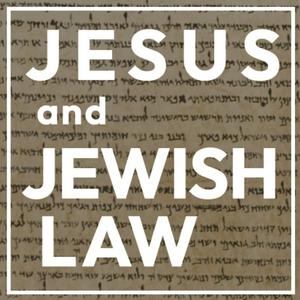7. Healing on the Sabbath
Why did some Jews object to Jesus healing on the Sabbath? Was it because they were cold, hard legalists who cared about observing the law more than having compassion on others? And why did Jesus think it was permissible for him to heal people on the sabbath? In this episode, we explore various ancient Jewish views on the relationship between sabbath, healing, and preserving life, and we take a close look at Jesus' legal arguments for why he heals on the sabbath. Primary Texts Referenced in this Episode: 1 Maccabees 2:29-41: https://www.biblegateway.com/passage/?search=1%20macc%202%3A29-41&version=NRSVUEJosephus, Antiquities 3:281-82:https://penelope.uchicago.edu/josephus/ant-3.html#EndNote_Ant_3.33aJosephus, Antiquities 12.274ff: https://penelope.uchicago.edu/josephus/ant-12.html]Jewish War 2.147: https://penelope.uchicago.edu/josephus/war-2.html]Philo, Special Laws 2.39: https://www.earlychristianwritings.com/yonge/book28.htmlPhilo, On the Migration of Abraham 1.91: https://www.earlychristianwritings.com/yonge/book16.htmlCD/Damascus Document 11:13:4Q265/4QMiscellaneous Rules, Fragment 6, 5-811Q13/11QMelchizedek: https://www.marquette.edu/maqom/11QMelchizedek.pdfMishnah, Rosh ha-Shanah 1.9: https://www.sefaria.org/Mishnah_Rosh_Hashanah.1.9?lang=enMishnah, Yoma 8.5–7: https://www.sefaria.org/Mishnah_Yoma.8.5?lang=biMishnah, Shabbat 14:4: https://www.sefaria.org/Mishnah_Shabbat.14.4?lang=biTosefta, Shabbat 14.3: https://www.sefaria.org/Tosefta_Shabbat.14.3?lang=enHippocrates, Aphorisms 7.47: https://classics.mit.edu/Hippocrates/aphorisms.7.vii.htmlArticles Mentioned in this Episode:Logan A. Williams, 'Melchizedek, the Son of Man, and Eschatological Jubilee: The Sin-Forgiving Messiahs in 11QMelchizedek and Mark', JSNT 46 (2023): 1-41: https://journals.sagepub.com/doi/full/10.1177/0142064X231191176Aharon Shemesh, '"Piqquach Nefesh Docheh Shabbat": Piqquach nefesh u-dvarim acherim she-dochim et ha-shabbat', Tarbiz 80 (2012): 481-505: https://www.jstor.org/stable/23607975?seq=1#metadata_info_tab_contents



